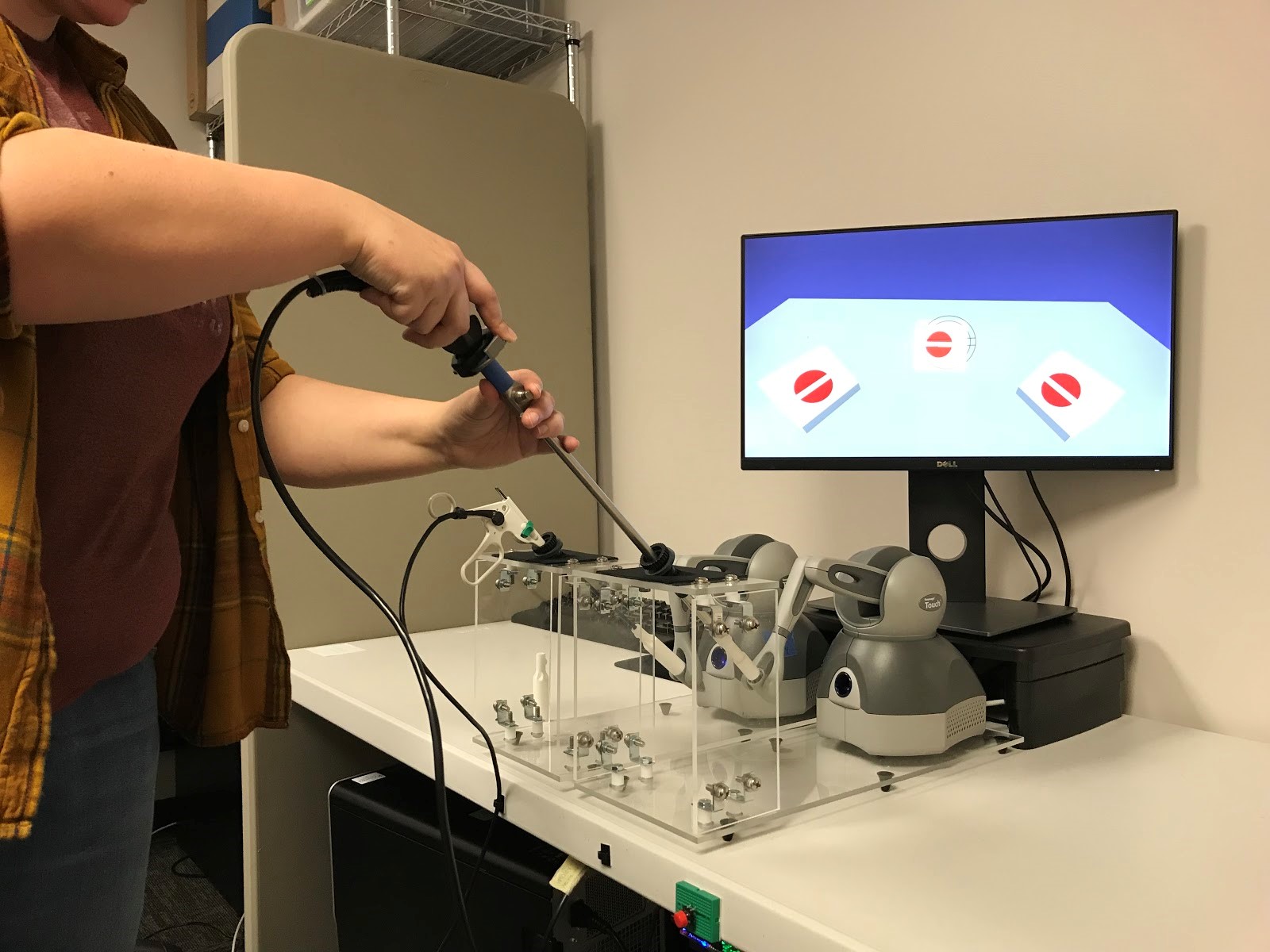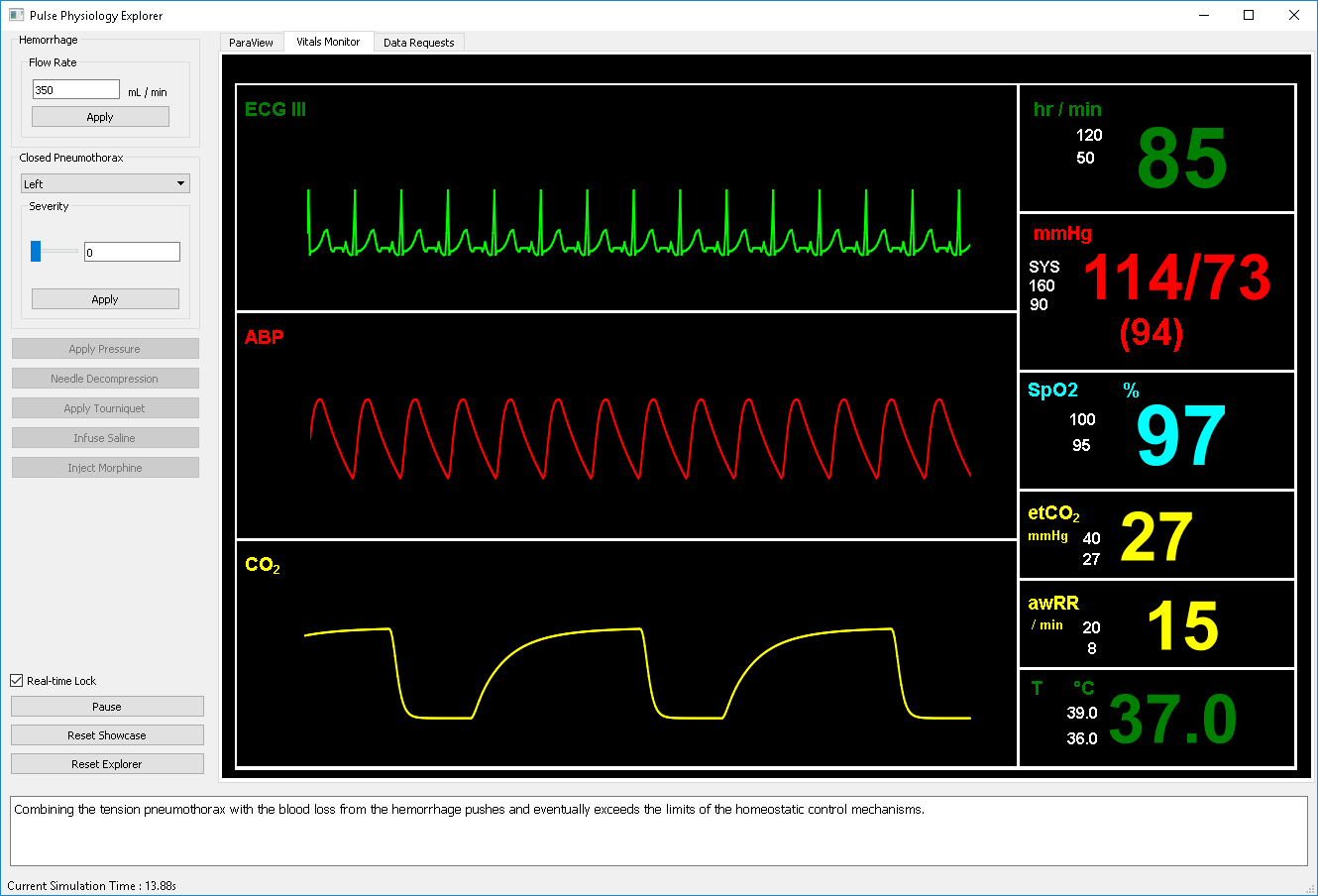Framing the Future of Medical Simulation at IMSH 2018

From January 13 to January 17, 2018, members of our medical computing team will attend the International Meeting on Simulation in Healthcare (IMSH). The meeting is boasted as “the world’s largest conference dedicated to healthcare simulation learning, research and scholarship.” It will include an Exposition, where we will demo capabilities in virtual training and simulation at booth 611. These capabilities come from two of our open source platforms: the interactive Medical Simulation Toolkit (iMSTK) and the Pulse Physiology Engine.
iMSTK: Interactive Medical Simulation Toolkit
iMSTK offers an easy-to-use framework for building surgical simulation and virtual reality-based applications. Since this framework is available as open source, it can be used without restrictive licences. It can also be extended and interfaced with third-party libraries.
We built the task trainer for laparoscopic surgery shown below using iMSTK.

Our latest developments in iMSTK have focused on improving the rendering engine. New rendering capabilities include separable subsurface scattering, bloom, deferred decals, shadow mapping, physically-based shading, PN triangle tessellation, image-based lighting, horizon-based ambient occlusion, and filmic tone mapping. We plan to further develop the rendering engine this year, so continue to check our blog for updates.
Pulse Physiology Engine
We introduced the Pulse Physiology Engine in August 2017. Like iMSTK, Pulse is used to rapidly prototype virtual simulation applications. Specifically, these applications simulate whole-body human physiology through computational physiology models.
As we mentioned in August, we are developing a graphical user interface (GUI) for the Pulse Physiology Engine. This GUI, called the Pulse Physiology Explorer, executes the engine and displays its physiologic output using ParaView and Qt. In the past few months, we have made major progress on the GUI. As a result, it can now display vital signs on a medical monitor as they are calculated in real-time by the engine.

We also added an anaphylaxis scenario to the Pulse Physiology Explorer, which demonstrates respiratory function and oxygen saturation effects. Another new scenario—this one for multi-trauma—uses existing models to show the effects of hemorrhage and pneumothorax.
We aim to make the explorer the first out-of-the-box application to be built on the Pulse Physiology Engine repository. We also aim to cultivate the open source communities around the Pulse Physiology Engine and iMSTK. If you are interested in getting involved, please contact kitware@kitware.com, or drop by our booth (611) at IMSH.
I’d love it if you could acknowledge the pioneering work of Dr. Geoff Parkin on closed loop circulatory control in your references.
Even if he wasn’t directly cited, you’re travelling over well-tilled ground and his fundamental insights are deserving of acknowledgement. Also, well worth contacting, he’s -the- font of wisdom on circulatory physiology.
Regards, Phill Somerville.
https://www.cicm.org.au/CICM_Media/CICMSite/CICM-Website/Resources/Publications/CCR%20Journal/Previous%20Editions/September%201999/13-Sept_1999_Volume-State-Control.pdf
https://www.researchgate.net/scientific-contributions/2062693904_Geoffrey_Parkin
Hello,
Thank you for pointing us to this great research.
Rachel Clipp
Thanks Rachel, a hero of mine. X